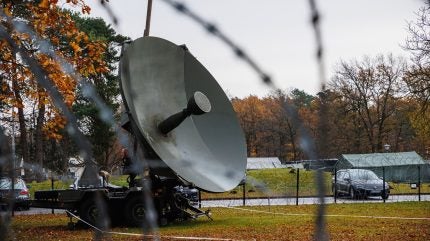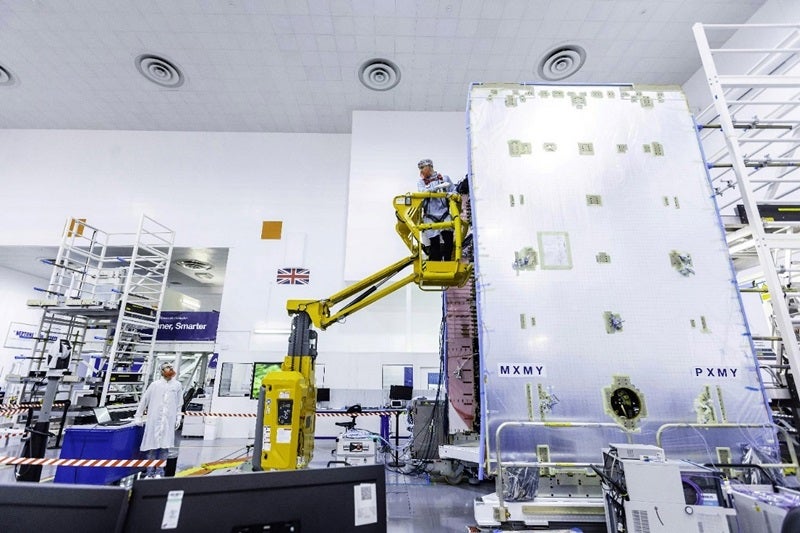
UK Strategic Command is beginning to update its terrestrial satellite communication (SATCOM) terminals on land and at sea.
A request for information (RFI) was released calling for industry offerings in the sphere of Maritime Military SATCOM Terminals at the end of October 2024.
Less than a week later, the Ministry of Defence (MoD) revealed it is also looking to replace the current High Resilience Military Satellite Communication Land Terminals through what it calls the Next Generation Land Terminal (Strategic) project.
Crucially, these terminals act as a channel for the British military’s global communications via its most significant space asset to date: the SKYNET constellation. SKYNET 5 are the most recent generation of military satellites; although the first of the next generation SKYNET 6A satellites is scheduled for launch in 2026.

Pursuing flexibility in the electromagnetic spectrum
The government believe that as SKYNET 6 advances so should the capability of the military’s terminals.
While these stations already operate in a congested electromagnetic environment (EM) amid high vibration and shock conditions, the RFI touches on certain areas for improving Royal Navy and Royal Fleet Auxiliary communications:
How well do you really know your competitors?
Access the most comprehensive Company Profiles on the market, powered by GlobalData. Save hours of research. Gain competitive edge.

Thank you!
Your download email will arrive shortly
Not ready to buy yet? Download a free sample
We are confident about the unique quality of our Company Profiles. However, we want you to make the most beneficial decision for your business, so we offer a free sample that you can download by submitting the below form
By GlobalData- Increased performance in resilient X-band frequencies;
- adoption of dual band systems (X and Ka) simultaneously;
- and duplex operation (sending and receiving data between different systems simultaneously) in left and right hand circular polarisation.
These criteria explore ways for the services to operate flexibly across the EM spectrum. Services need to use more data in the battlespace than ever before, and this means they need to be able to manage the throughput with greater ease more quickly.
Electronic warfare (EW) in the EM spectrum is a decisive mode of operations as the Russians can attest. The use of EW capabilities by invading Russian forces against Ukraine have generated significant consternation among Western military officials, according to GlobalData intelligence. The comparative lack of investment and innovation has enabled the Russian state to gain a strategic advantage over its geopolitical rivals.
Whereas, the government has not expressly stated any specific guidelines for the new land terminals under the Next Generation Land Terminal (Strategic) project. However, the MoD have announced a market day on 3 December in Wiltshire, where it will relay its requirements.
Existing terminals
The Royal Signals is responsible for the provision of all of the British Army’s tactical satellite ground terminals, providing strategic and operational SATCOM for all land-based headquarters.
Reacher is the cornerstone of British Army SATCOM with mobile terminals delivering a range of services through robust, secure communciation links. There are three variants: Large, Medium and Royal Marine terminals. Large and Medium terminals are mounted on the Mowag Duro 3 vehicle. Likewise, there is also Talon, a lightweight deployable terminal.
Meanwhile the Navy uses the X-band SCOTPatrol 0.8m maritime satellite terminals. These are said to be deployed from the service’s minesweeper vessels.



